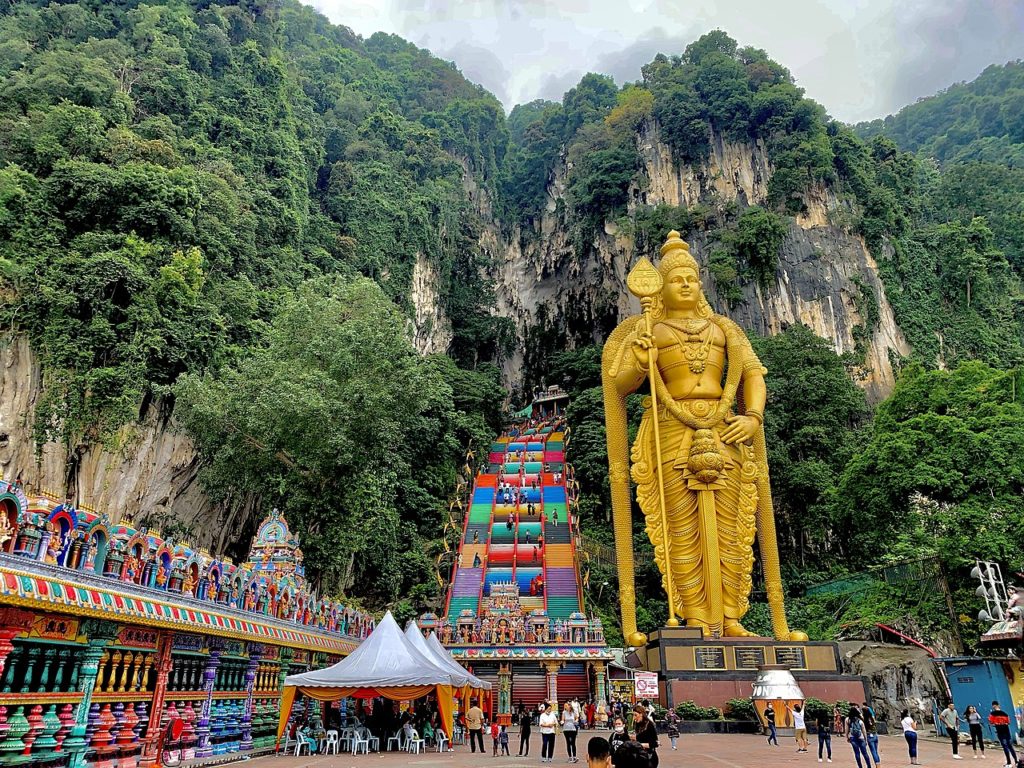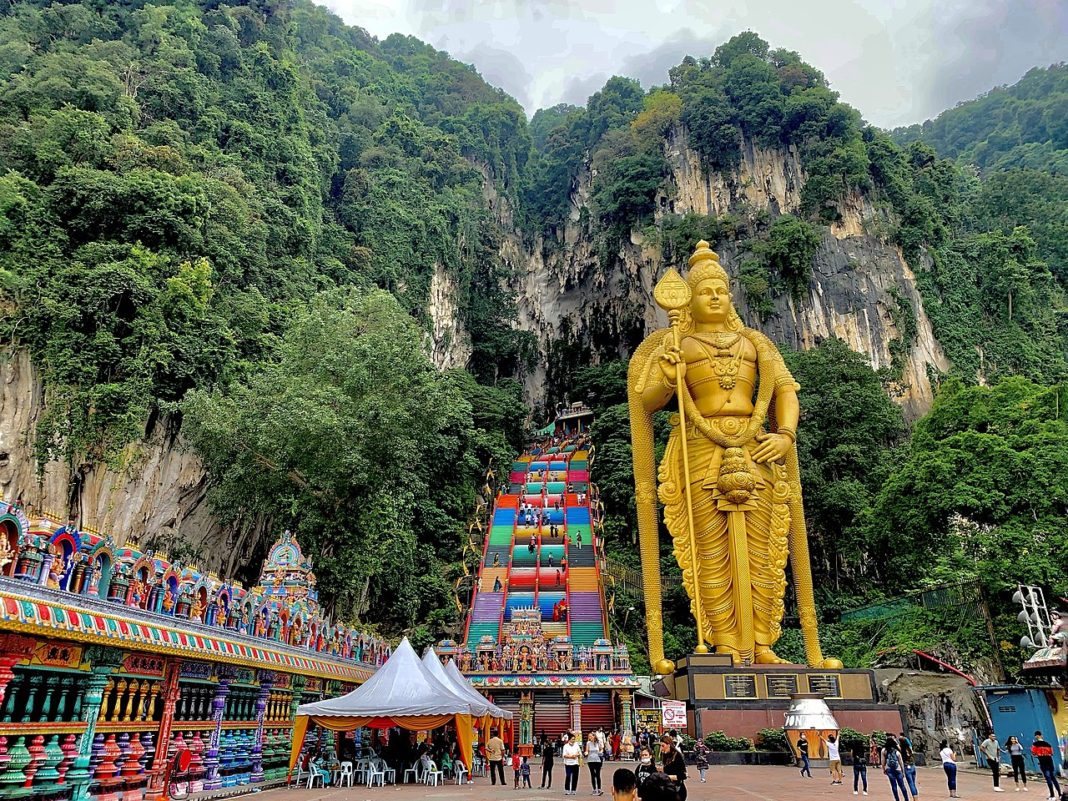Formed 400 million years ago, but only in the nineteenth century, Batu cave was found by an Indian trader named Thamboosamy, and it was not until the twentieth century that it was rebuilt as a temple of the gods, becoming a center of Hinduism in Malaysia.
They are named for the Sungai Batu (Batu River), which flows nearby and are located 7 miles (13 km) north of Kuala Lumpur, and nearby there is also a village of the same name. The complex consists of different large and small caves, including 3 large caves: Cathedral Cave, Art Gallery Cave, and Dark Cave. In some caves, there are temples, while others have statues and drawings.

The unique feature of this cave is the 42.7m high statue of Murugan standing in front of the cave entrance, considered the tallest statue of Murugan in the world. The statue is gilded, exuding majesty and sacredness.
In addition, another highlight is the 272 colorfully painted steps leading to the Cathedral Cave, bringing a fresh breeze to the cave scene. Although climbing nearly 300 steps can make you “breathless”, the view from above will make you see that the effort you have just put in is worth it.
Going to visit the cave, visitors will encounter Cathedral Cave first. This place has an arch up to 100m high, and 200m wide, which is considered the largest and most important cave in Batu Caves. Crossing a bridge, you will arrive at the Art Gallery Cave. In the cave are carvings of gods and murals depicting stories about God Murugan and other legends.
According to Wikipedia, vietravel.com, britannica.com














